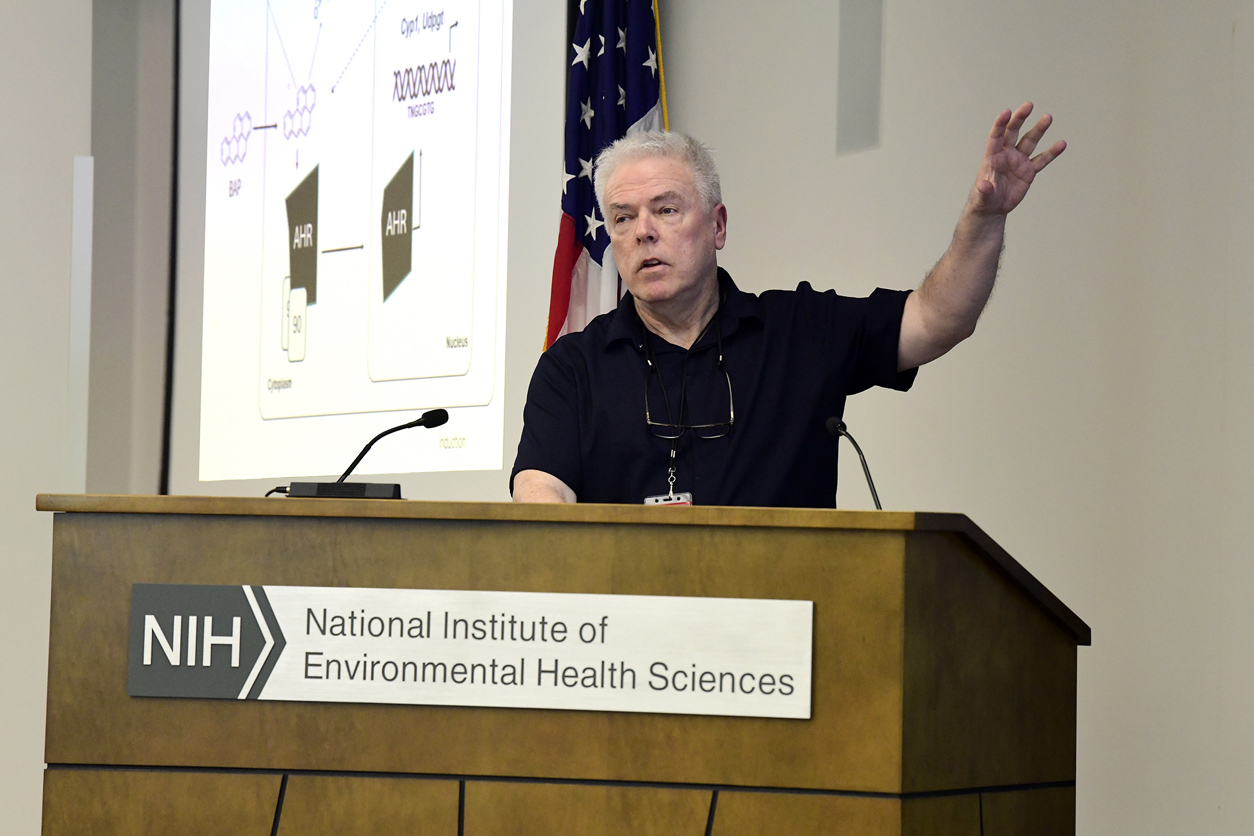OPINION: Overconsumption: Halloween’s latest and scariest trick – The New Political

Report on Halloween Overconsumption and its Impact on Sustainable Development Goals
Introduction: Escalating Consumption Patterns
The annual observance of Halloween is increasingly characterized by unsustainable overconsumption, posing significant challenges to environmental health and global sustainability targets. Consumer spending on the holiday is projected to reach a record $13.1 billion, surpassing the previous year’s $12.2 billion. This trend is driven by a culture of disposability, particularly concerning costumes, decorations, and confectionery, which directly conflicts with the principles of the United Nations Sustainable Development Goals (SDGs).
Key Areas of Unsustainable Consumption
Costumes and the Fast Fashion Model
The proliferation of fast fashion has heavily influenced Halloween consumption. Social media platforms promote a constant cycle of new trends, encouraging the purchase of low-quality, inexpensive costumes designed for single use. This practice directly contributes to waste and pollution.
- Material Waste: Most costumes are manufactured from cheap synthetic fabrics like polyester and nylon, which are derived from fossil fuels. These materials are not biodegradable and contribute to long-term plastic pollution.
- Plastic Pollution: American consumers generate an estimated 2,000 tons of plastic waste from costumes alone during the Halloween season. Over time, this waste degrades into microplastics, contaminating soil and water systems.
- Economic Inefficiency: The model of purchasing new costumes annually promotes a linear “take-make-dispose” economy, a wasteful use of resources and consumer funds.
Single-Use Decorations and Trend-Driven Purchasing
Consumer spending on Halloween decorations is expected to total $4.2 billion, with 78% of shoppers purchasing new items. This sector is also influenced by rapidly changing, social media-driven trends, such as the “spooky-chic” style, which have an average lifecycle of only 10 months. This encourages consumers to discard existing decorations in favor of new ones annually, exacerbating waste problems. The majority of these decorations are made from non-recyclable, single-use plastics, destined for landfills after the holiday.
Confectionery Packaging and Food Waste
An estimated $3.9 billion is spent on Halloween candy annually. The packaging for these products represents a significant environmental challenge.
- Packaging Waste: Individually wrapped candies generate substantial litter. These wrappers are typically made from mixed materials that are difficult to recycle and often contaminated with food residue, ensuring they end up in landfills or as environmental pollutants.
- Marine Pollution: A report by the Ocean Conservancy identifies candy and snack wrappers as the most common type of litter found in oceans, outnumbering plastic bottles and straws combined.
Analysis of Impacts on Sustainable Development Goals (SDGs)
The consumption habits associated with Halloween directly undermine progress toward several key SDGs:
- SDG 12: Responsible Consumption and Production: The holiday’s current trajectory is in direct opposition to this goal. The emphasis on single-use costumes and decorations, fueled by fast fashion and transient trends, exemplifies unsustainable production and consumption patterns. It fails to meet targets related to substantially reducing waste generation through prevention, reduction, recycling, and reuse.
- SDG 14: Life Below Water: The prevalence of candy wrappers and microplastics from synthetic costumes in marine environments poses a direct threat to aquatic ecosystems. This pollution contributes to the degradation of marine biodiversity, conflicting with the goal to prevent and significantly reduce marine pollution of all kinds.
- SDG 11: Sustainable Cities and Communities: The immense volume of non-recyclable waste generated in a short period places a significant strain on municipal waste management systems. This contributes to overflowing landfills, a critical challenge for creating sustainable and resilient urban environments.
- SDG 13: Climate Action: The production of synthetic fabrics for costumes and plastic for decorations is an energy-intensive process reliant on fossil fuels, contributing to greenhouse gas emissions and climate change.
Recommendations for a Sustainable Transition
To align Halloween celebrations with sustainability principles, a shift in consumer behavior and industry practices is necessary. The following actions are recommended:
- Promote Circularity: Encourage the adoption of circular economy models by promoting the reuse, repair, and repurposing of costumes and decorations. Supporting thrift stores, clothing swaps, and DIY initiatives can divert significant waste from landfills.
- Champion Conscious Consumerism: Advocate for purchasing high-quality, durable items that can be used for multiple years. This reduces overall consumption and waste, aligning with the core tenets of SDG 12.
- Invest in Sustainable Materials and Packaging: Encourage manufacturers to utilize biodegradable materials for products and develop recyclable or compostable packaging solutions for confectionery to mitigate plastic pollution, particularly in marine environments (SDG 14).
1. Which SDGs are addressed or connected to the issues highlighted in the article?
SDG 12: Responsible Consumption and Production
- The article’s central theme is the “staggering overconsumption from American consumers” during Halloween. It explicitly discusses wasteful consumption patterns, such as the use of “disposable decorations,” “single-use costumes,” and the promotion of a “culture of overconsumption” fueled by fast fashion and social media trends. This directly relates to the goal of ensuring sustainable consumption and production patterns.
SDG 14: Life Below Water
- The article connects Halloween consumption directly to marine pollution. It states that leftover candy wrappers “typically make their way into landfills or the ocean” and cites a report from Ocean Conservancy that identifies “candy and snack wrappers are the most common litter found in our oceans.” This highlights the impact of land-based waste on marine ecosystems.
SDG 11: Sustainable Cities and Communities
- The article discusses the significant amount of waste generated that ends up in landfills. It mentions that single-use costumes and decorations “often end up in landfills” and that the average trick-or-treater generates “about a pound of trash.” This waste contributes to the challenge of municipal waste management, a key aspect of creating sustainable cities.
2. What specific targets under those SDGs can be identified based on the article’s content?
Target 12.5: Substantially reduce waste generation
- This target aims to reduce waste through prevention, reduction, recycling, and reuse. The article directly addresses this by highlighting the “2,000 tons of plastic waste” from costumes and the “pound of trash” per trick-or-treater. It also proposes solutions like using thrift stores and repurposing clothes, which align with the principles of reuse and waste reduction.
Target 14.1: Reduce marine pollution
- This target focuses on preventing and significantly reducing marine pollution from land-based activities. The article’s specific mention of candy wrappers being the “most common litter found in our oceans” and totaling “more than plastic bottles and straws combined” directly links the consumption habits discussed (land-based activities) to the problem of marine debris.
Target 11.6: Reduce the environmental impact of cities
- This target includes a focus on municipal and other waste management. The article’s discussion of costumes, decorations, and candy wrappers ending up in landfills speaks to the per capita environmental impact of consumption within communities. The sheer volume of waste generated during a short holiday season places a burden on municipal waste systems.
Target 12.8: Promote universal understanding of sustainable lifestyles
- This target aims to ensure people have the relevant information and awareness for sustainable lifestyles. The article criticizes how social media platforms “are constantly promoting a cycle of new and unique trends, and are increasing the demand for new items while discouraging reuse.” It concludes by urging consumers to “be mindful of what you purchase, reuse what you can,” which is an effort to raise awareness and promote a shift in lifestyle.
3. Are there any indicators mentioned or implied in the article that can be used to measure progress towards the identified targets?
Indicator: Volume of Plastic Waste from Costumes
- The article states that “American consumers contribute around 2,000 tons of plastic waste with their mass-produced costumes.” This is a direct, quantifiable indicator of waste generation related to a specific consumption practice, which can be used to measure progress towards Target 12.5.
Indicator: Per Capita Waste Generation
- The article mentions that “the average trick-or-treater generating about a pound of trash.” This per capita metric is a specific indicator for measuring waste generation at an individual level, relevant to both Target 12.5 and Target 11.6.
Indicator: Consumer Spending on Single-Use Items
- The article provides several financial figures that indicate the scale of consumption: “$13.1 billion” in total Halloween spending, “$4.2 billion” on decorations, and “$3.9 billion” on candy. Tracking these spending habits can serve as a proxy indicator for the level of consumption and potential waste generation.
Indicator: Prevalence of Marine Debris from Specific Sources
- The statement that “candy and snack wrappers are the most common litter found in our oceans” is a qualitative and comparative indicator. It identifies a specific type of waste from a land-based activity (Halloween consumption) as a primary contributor to marine pollution, which is directly relevant for measuring progress on Target 14.1.
4. SDGs, Targets and Indicators Table
| SDGs | Targets | Indicators |
|---|---|---|
| SDG 12: Responsible Consumption and Production |
12.5: By 2030, substantially reduce waste generation through prevention, reduction, recycling and reuse.
12.8: By 2030, ensure that people everywhere have the relevant information and awareness for sustainable development and lifestyles in harmony with nature. |
|
| SDG 14: Life Below Water | 14.1: By 2025, prevent and significantly reduce marine pollution of all kinds, in particular from land-based activities, including marine debris. |
|
| SDG 11: Sustainable Cities and Communities | 11.6: By 2030, reduce the adverse per capita environmental impact of cities, including by paying special attention to… municipal and other waste management. |
|
Source: thenewpolitical.com
What is Your Reaction?
 Like
0
Like
0
 Dislike
0
Dislike
0
 Love
0
Love
0
 Funny
0
Funny
0
 Angry
0
Angry
0
 Sad
0
Sad
0
 Wow
0
Wow
0



















































.jpg.webp?itok=0ZsAnae9#)

























